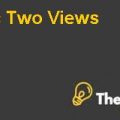
Question 2
Compute revised product costs for RC1 and RC2. Why did the product costs change?
Answer 2
After the calculation of overhead rate, the management of the company had calculated the per unit activity based cost for each product. Parts cost is calculated through dividing the number of units with respect to the total parts cost. The calculation has been performed separately for both the products which are RC1 and RC2. The supplies rate is calculated by dividing total units with the total cost of supplies for both product units respectively.
The fabrication overhead cost per unit is calculated by determining the labor rate of fabrication with respect to the actual unit rate of the fabrication under labor cost. Same is done with the fabrication overhead cost per unit.
The cost per unit for assembly overheads, labor, packaging and shipping has also been calculated on the same basis as above. The general expense is distributed on the basis of the direct labor hours. The total cost per unit is $15 for RC1 and $20 for RC2. They follow the allocation process of activity based costing which provides justification of the managerial accounting. These revised costs for both the projects are now properly calculated because the overheads are now fairly allocated. The revised cost per unit are shown in the Appendix B and also annexed in the excel sheet named as revised cost.
Question 3
Prepare a revised 2008 monthly budget using the revised product costs.
Answer 3
The budget is shown in the excel sheet with all the necessary changes made to it which are required activity based costing method is better for the development of the organization as it fairly allocates the costs. The budget is annexed in the excel sheet and in the appendix C. Conferring to the consumption rates attributed to supplies cost RC1 is utilizing more than RC2. The flat rate in the previous monthly budget was not calculated correctly at the rate of each product spent supplies. Under ABC, the actual cost picture has been depicted which can be compared to case exhibit 1. RC1 is more profitable as compared to the RC2.
Question 4
Complete her cost sheets for the “two factory” approach, Exhibit 5, by separating the order-driven costs from Table 2 and by using actual, rather than budgeted, sales volumes. Why did the product costs change again?
Answer 4
The next problem is the analysis comparison “Two Factory cost and ABC” that cannot be made with actual volume because the data is prepared from the budgeted data. In order to do this with the help of Exhibit 5 the per-unit product cost driver on orders must be figured for both RC1 and RC2 products. The table which is shown in Appendices and the excel sheet are the actual cost driven by the orders of the company.
These excel tables which are shown in the Appendix D provide the comparison of ABC and Two Factory Techniques Method. When observing the figures one can straightly identify that product cost changes between both methods. Entire manufacturing cost is inferior for packing and shipping overhead and common operations, for this reason they eliminated the $98000 from table two.
Moreover, she decided to include the additional expenditures of orders for handling, which marks the cost for orders $400 per order. As soon as it is divided with the actual units by product the cost is added to entire manufacturing cost.
Due to this reason, the first modification between the methods arises because ABC does not include additional expenses; in the meantime they were not measured at the start of the year. The second modification comes from selling and administrative cost.
ABC got this figure by multiplying the monthly approximation 12 times which is 480,000. Whereas, Two Factory technique displays that the actual cost was inferior which has similarly pushed the total unit cost toward the downside. ABC used budgeted figures of unit while two-factory uses the actual unit which is the main difference. The comparison is not showing the feasibility between them.
Question 5
Compute RC2 breakeven (units/order) given that processing an order costs $400 no matter how many units were ordered. What is the break-even number of units necessary to cover the order costs?
Answer 5
After calculating all extra costs which come under the RC2 units, she calculated the breakeven in units by covering the order cost which is determined as fixed cost of the company. The breakeven is calculated in the excel sheet which is also mentioned in the Appendix E. the breakeven of the RC2 is 14545 in units...............................
This is just a sample partial case solution. Please place the order on the website to order your own originally done case solution.









